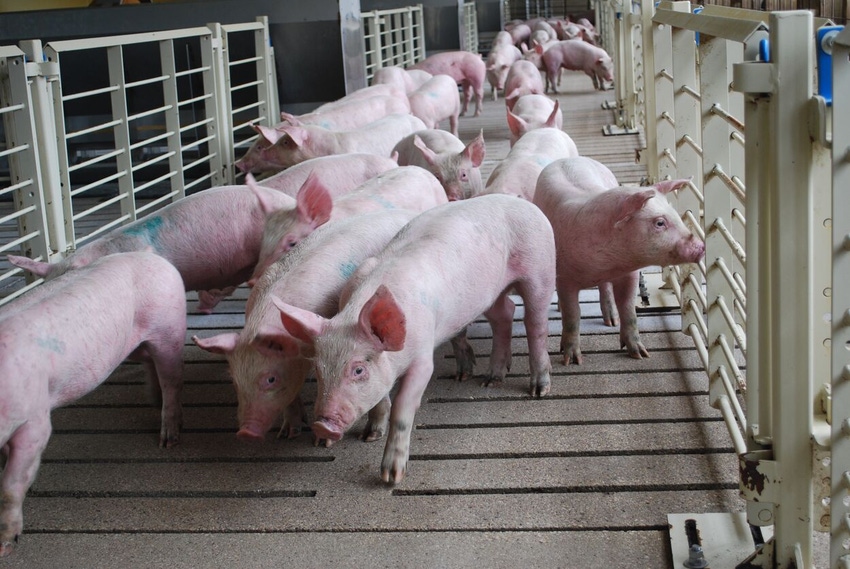With increasing cost of base feed ingredients for swine diets, potential for nutrient uplift, particularly in finishing pig diets, has considerable value.
May 19, 2022

A by-product of the fermentation process, yeast ferementate products (yFP) are of particular interest as feed additives in livestock feeds due to their composition of functional carbohydrates, capacity to bind pathogens and modulate the immune system. Another more recent interest in fermentate products is the potential to improve digestibility and provide a nutrient 'uplift' in the case of lower nutrient concentration diets.
With the increasing cost of base feed ingredients for swine diets (corn and soybean meal), the potential for nutrient uplift, particularly in finishing pig diets, has considerable value. This study evaluated the potential nutrient uplift of yFP in finishing pig diets formulated at or below energy and protein requirements.
Grower pigs (32.2 ± 3.6 kg, 6 pigs/pen, n = 11 pens/treatment) were assigned to one of four dietary treatments: Control (CON), Control plus yFP at 20 lb/ton (CON+), and 5% reduced energy and protein plus yFP (RED5+) or 8% reduced energy and protein plus yFP (RED8+) where soyhulls replaced portions of corn, soybean meal and distiller's dried grains with solubles (Table 1).
Individual pig weight and pen feed disappearance were measured every two weeks until day 70 and again at day 77 just prior to first pigs removed for market. Total tract energy and dry matter digestibility was determined using fecal samples collected on day 70.
Overall, there were no significant differences in final body weight, daily gain, feed intake or feed:gain; although CON+ pigs had 3% lower feed:gain compared to CON primarily due to slightly lesser daily feed intake, with no difference in daily gain among treatment groups (Table 1).
Similarly, there was minimal difference in diet dry matter digestibility despite RED5+ and RED8+ containing 3 and 4% more dietary NDF than CON. The impact of greater NDF on digestibility is estimated at 0.8% reduction in dietary energy digestibility with each 1% increase in NDF (Le Goff and Noblet, 2001; Le Gall et al., 2007). Overall, the similar growth performance and lack of difference in total tract dry matter digestibility suggests 2 – 3 % nutrient uplift with fermentate inclusion.
Over the entire experimental period, average daily temperature was at least 6°F greater than age-specific target temperature (Figure 1). Comparing average temperature over each weigh period and feed intake, the pattern of response indicates that pigs on CON+ adjusted feed intake to account for a presumed energy uplift based on slightly lesser intake than CON pigs in most weigh periods. Given the higher fiber content in RED-diets, some adaptation (i.e. lesser intake in first weigh period) followed by compensation for lower energy (i.e. greater intake) was expected.
The pattern of response suggests adaptation to dietary fiber levels occurred in the first two weeks; however, the limited difference in intake between RED-diets and CON for the duration of the trial similarly suggests an energy uplift due to fermentate inclusion. In addition, given the high room temperatures, a reduction in intake of high fiber diets would have been expected as a means to reduce heat of fermentation; as noted above, there was limited intake adjustment for RED-diets which further supports an impact on digestibility. Overall, fermentate inclusion within this study provided a nutrient uplift to compemsate for a 5 – 8% reduction in dietary energy and protein.
Source: Joel Kieser, Jorge Perez-Palencia, and Crystal Levesque, who are solely responsible for the information provided, and wholly own the information. Informa Business Media and all its subsidiaries are not responsible for any of the content contained in this information asset.
References
Le Goff G, Noblet J. Comparative total tract digestibility of dietary energy and nutrients in growing pigs and adult sows. J. Anim Sci. 2001; 79(9):2418-2427. 10.2527/2001.7992418x.
Le Gall M, Warpechowski M, Jaguelin-Peyraud Y, Noblet J. Influence of dietary fibre level and pelleting on the digestibility of energy and nutrients in growing pigs and adult sows. Animal. 2009; 3(3):352-359. 10.1017/S1751731108003728.
You May Also Like



